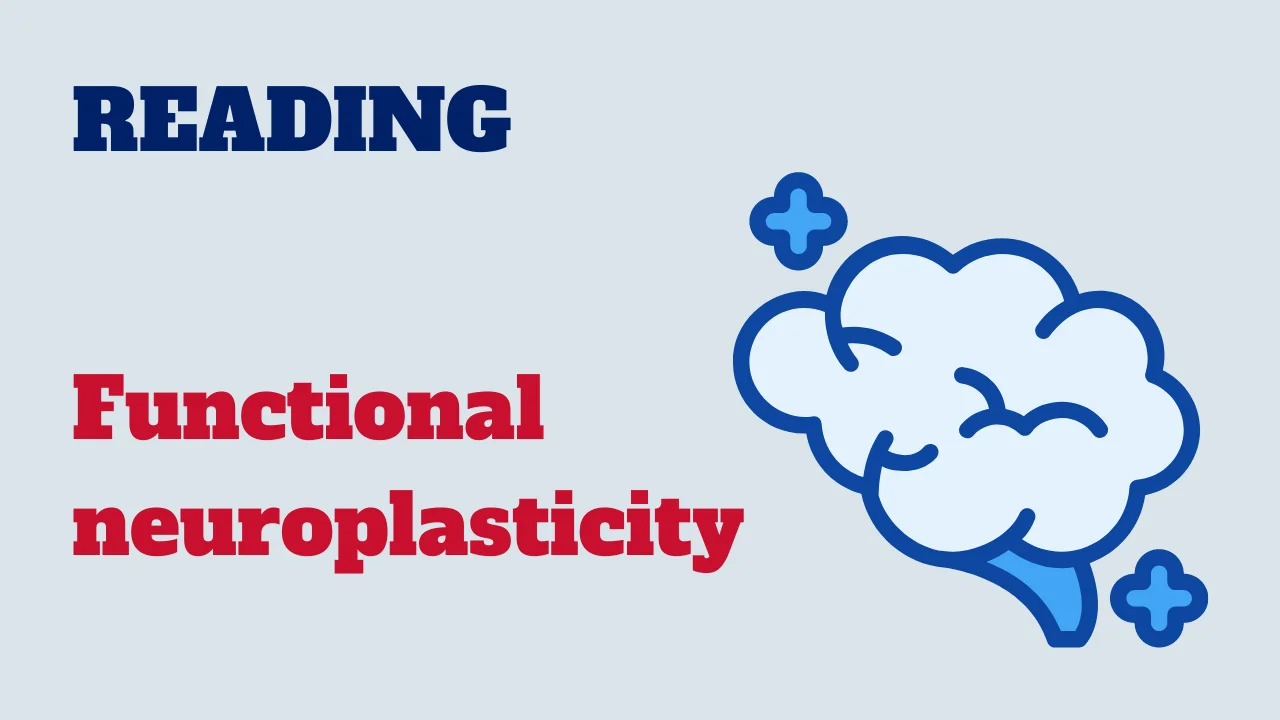Welcome to a discovery of functional neuroplasticity! In this reading activity, we’ll study the fascinating concept of how the brain adapts and reorganizes its functional properties in response to various stimuli and challenges.

From homologous area adaptation to map expansion, we’ll uncover the remarkable ways in which the brain can dynamically adjust its cognitive processes.
Text: Functional neuroplasticity
Functional neuroplasticity refers to the brain’s remarkable ability to reorganize and adapt its functional connections in response to learning, experience, or injury. This dynamic capability underpins our ability to learn new skills, recover from neurological damage, and adapt to changing environments, demonstrating the brain’s flexibility and resilience.
The concept of neuroplasticity challenges the earlier notion that the adult brain is relatively fixed and unchangeable. Research has shown that neurons and neural networks are capable of significant reorganization. This reorganization involves changes in the strength of synapses, the growth of new synaptic connections, and the pruning of less-used connections, allowing the brain to optimize its functionality based on experience.
Learning and memory are prime examples of functional neuroplasticity in action. When we learn a new skill, such as playing a musical instrument or mastering a new language, specific neural circuits are activated and strengthened through repeated practice. This process, known as synaptic plasticity, involves long-term potentiation (LTP) and long-term depression (LTD), which respectively enhance or weaken synaptic connections.
Functional neuroplasticity is also crucial for recovery after brain injuries, such as strokes or traumatic brain injuries. Following such events, the brain can reassign functions from damaged areas to other, healthier regions. Rehabilitation therapies often leverage this plasticity by engaging patients in activities that stimulate and encourage the brain to form new pathways and recover lost functions. For example, constraint-induced movement therapy forces stroke patients to use their affected limbs, promoting cortical reorganization and functional improvement.
Moreover, neuroplasticity plays a significant role in sensory compensation, where the loss of one sense leads to the enhancement of others. For instance, individuals who are blind from an early age often exhibit heightened tactile and auditory abilities, as their brains adapt by reallocating cortical areas to process non-visual information more effectively.
In summary, functional neuroplasticity is a fundamental property of the brain that underlies learning, recovery, and adaptation. Its study not only enhances our understanding of brain function but also informs therapeutic approaches for a range of neurological conditions, highlighting the brain’s incredible capacity for change and adaptation.
Comprehension questions
Congratulations on completing the examination of functional neuroplasticity! By studying the mechanisms underlying the brain’s adaptive capabilities, we gain valuable insights into the dynamic nature of cognitive processes. Through further research and inquiry, we can continue to deepen our understanding of how the brain responds to stimuli and challenges, ultimately contributing to advancements in neuroscience and cognitive science.



